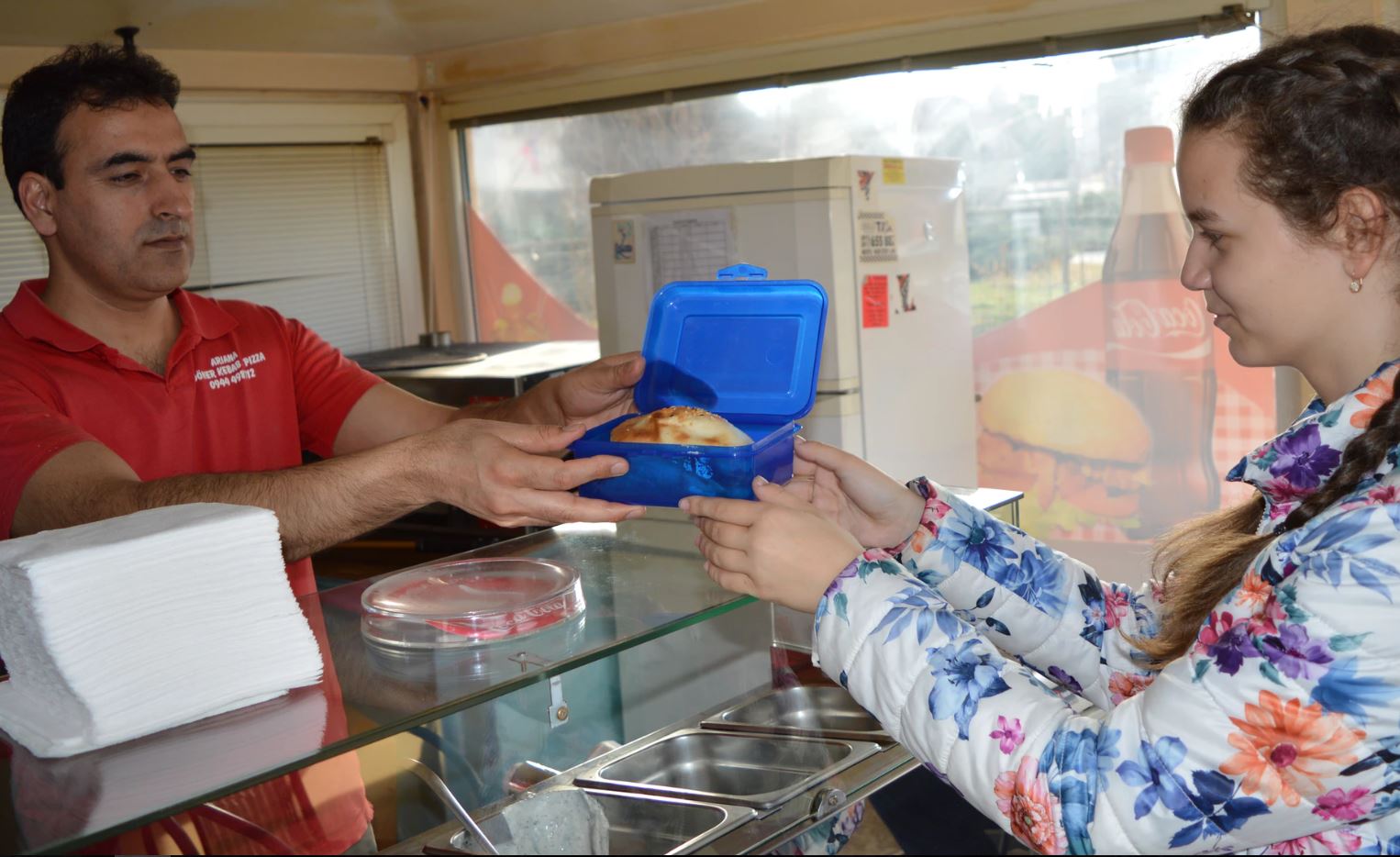YRE COMPETITION 2021
Article 11-14 years
By Darja Skripkina (10), Latvia.
Photo: LETA, Ieva Leiniša
Fireworks usually associated with celebrations. People organize fireworks at weddings, birthdays, but cities use them to attract people to street events. However, it is essential to understand the impact of fireworks on the environment and the awareness of the Latvian citizens.
Over the past two years, the need for fireworks in Latvia has been topical, and the possibility of refusing fireworks at the state or local government level has been discussed. The public began to think about the value of fireworks and the benefits of a short moment of joy. Also, important worry is the impact on public health and the environment. In 2019, the initiative "For Holidays without Fireworks" was published on the portal manabalss.lv. [14] This petition may start a new tradition of celebrating Latvian holidays.
The Story and Promotion of the Initiative
“The first reason for beginning this initiative was the idea that during holidays we spend so much money on entertainment and forgetting that this money could serve other social purposes, such as charity” — said Maija Priedite, author of the petition "For Holidays without Fireworks".
At the end of 2019, she called society to support the idea of completely banning the spending of taxpayers money on fireworks. In February 2021, the initiative has already been supported by more than 12,000 residents.
Answering the question about her contribution to the promotion of the idea, Maija admits:
“I didn`t do much. I posted the information on my personal social network Facebook profile, but it didn't get any publicity. At the end of 2019, when the initiative was published on manabalss.lv everything happened by itself. Now petition is being considered by the parliament of the Republic of Latvia”. [17]
The Dark Side of the Shimmer
Even without considering the social aspects of fireworks, it is clear that together with radiant beauty, fireworks negatively affect the environment. It impacts the air, water, soil and people health, as heavy metals, other toxic chemicals and dust particles enter the environment during fireworks (Figure 1). [4][5][6][7]
Figure 1 Environmental pollution resulting from the use of fireworks http://www.backcountryattitude.com/toxic_fireworks.html
Dust particles damage the respiratory and cardiovascular systems. During holidays, the concentration of these substances in large cities is more than ten times higher than the norm. [8] Also, there are other reasons for avoiding the fireworks during the holidays, such as:
1. animals, including pets, are frightened and do not know where to go at this time; [8][10][11]
2. pyrotechnic explosions in the atmosphere lead to carbon dioxide emissions, for example, in the United States on Independence Day, the amount of carbon dioxide emissions can be equated to the amount during forest fires on 1093 hectares of land; [8]
3. safety — despite the popularity of pyrotechnics, these products can cause various injuries. [8][10]
The opposite opinion and readiness of the society to change
In February 2019, the residents of Riga were asked to express their attitude to the need for fireworks at state and city festivals in Riga. The survey data shows that the majority (72%) of respondents supported the fireworks in Riga. Critical attitude to the organization of fireworks was expressed by 24% of the study participants (including the answer "categorically do not support" was noted by 9%). [15]
In turn, representatives of the pyrotechnics industry note that both in terms of environmental impact and for financial reasons, it is still too early to abandon fireworks. [14] During the consideration of the initiative “For holidays without fireworks”, it was reported that festival fireworks cost a citizen of Riga 0.15 euros per year per person. Also, there are no cases of inpatient injuries in hospitals over the past 2-3 years, and environmental pollution is not even comparable to the pollution of mineral fertilizers during the cultivation of flowers. [17]
Classmates didn`t participate in the Riga city survey. Therefore, it was decided to run a survey to determine their attitude to the need for fireworks. The survey involved 17 respondents, most of whom (70.6%) support fireworks (Figure 2). Its means that the opinions of classmates and adult residents of Riga almost coincide. [16]
Figure 2 Opinion of respondents about the organization of fireworks [16]
Also, during the survey, it was found that 58.8% didn`t even think about the impact of fireworks on the environment. At the same time, it should be noted that 64.7% are ready, and 23.5% may be ready to give up fireworks after learning about their harm. [16] It means that by telling classmates about the negative impact of fireworks on the environment, it is possible to change their attitude. As well, they can tell it further to their families. It can convince people to abandon, for example, private holiday fireworks and thus reduce the harmful effects of fireworks in general.
Are there any alternatives?
Even though environmentally-friendly pyrotechnics are being actively developed today[9], it is rational to think about giving up such a relatively expensive and short-time entertainment in favour of laser performances.
Such multimedia performances can be changed, supplemented, placed in several places so that more people can see them. Laser performances can be accompanied by music, held on the water or in the sky, on buildings or fountains. In addition, in the future it will be possible to use electricity from renewable sources. Even now, about 50% of the electricity produced in Latvia is provided by hydroelectric power plants. [18] In Riga, for example, the International Light festival "Staro Riga" is trendy, and this year Latvian cities were also beautifully decorated with light installations for Christmas (Figure 3). [12][13]
Figure 3 Liepaja "Christmas balloon"
A century ago, a prominent Latvian poet Rainis wrote: "What changes, endures". Times, technologies, people's attitudes are changing. However, some values do not change. One of them — the well-being and health of our nature. Considering the results of the research, we can conclude that the moment has come when each of us, even a school student, can think and evaluate whether shimmering beauty is so necessary for our holidays.
References
[1]. https://www.euro.who.int/__data/assets/pdf_file/0004/385960/fs-sdg-3-9-air-rus.pdf
[2]. https://www.un.org/sustainabledevelopment/ru/takeaction/
[3]. https://www.un.org/sustainabledevelopment/ru/sustainable-development-goals/
[4]. https://www.compoundchem.com/2017/01/05/fireworks-environment/
[5]. https://www.angelfire.com/co3/NCFS/science/environmentalimpact.html
[6]. http://www.backcountryattitude.com/toxic_fireworks.html
[8]. https://greenbelarus.info/articles/13-08-2018/sem-prichin-otkazatsya-ot-pirotehniki
[9]. http://www.salutland.ru/stati-i-instrukczii/mozhet-li-pirotexnika-byit-ekologicheski-chistoj.html
[10]. https://ecokom.ru/ekologiya/o-vrede-fejerverkov-i-salyutov
[11]. https://www.belpressa.ru/society/drugoe/22831.html
[13]. https://www.db.lv/zinas/ziemassvetku-dekoraciju-un-to-izmaksu-top-10-latvijas-pilsetas-500268
[16]. https://docs.google.com/spreadsheets/d/1jjm3o-XnkmT3ioYmhVVP9GxbyLfQJbg6wkB8ZlJqGfQ/edit?usp=sharing
[18]. https://latvenergo.lv/lv/par-mums/razosana
© 2021 YRE Competition
Article, 11-14 years
1st Place
Title: Shimmering Dust
Country: Latvia
2nd Place
Title: The dark and murky messaging of the major watch brands
Country: Switzerland
3rd Place
Title: What the pandemic packed for us
Country: Slovakia
Honourable Mention
Title: Love protects Sinjajevina
Country: Montenegro



![Figure 2 Opinion of respondents about the organization of fireworks [16]](https://images.squarespace-cdn.com/content/v1/552e4b07e4b0d43bb9fe3f42/1630936389765-EY6A0O2Z106IEYHWC2HJ/original.png)






































